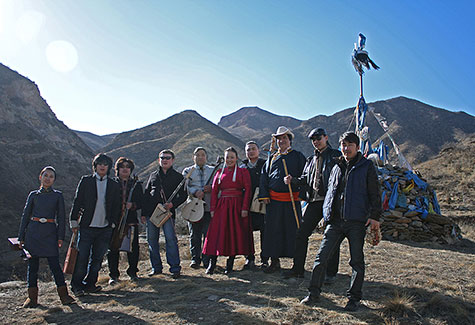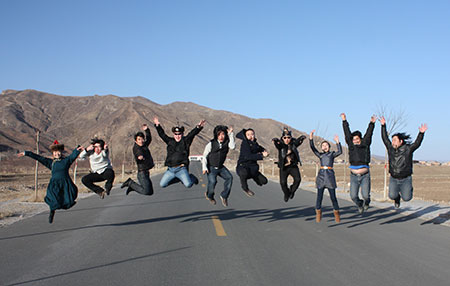
Mongolia is a hard land, high and windy, cold except when hot, a place of extremes, of mountains and deserts, of lost empires and tough survivors.
It is also a land of rich musical traditions — stirring, demanding, infectious — that were all but lost amidst the tumult of China’s 20th century. But over the last decade, AnDa Union has helped lead the charge to rescue, revive and even expand indigenous Mongolian music.
On Sunday, Oct. 20, these 10 supremely versatile musical “blood brothers” (and sisters) will bring the Music of Inner Mongolia to St. Louis as part of the Edison Ovations Series.
Tales of legend, tales of adventure
Describing themselves as “musical gatherers,” the members of AnDa Union hail from China’s Xilingol grasslands and trained together in the “Blue City” of Hohhot, at the Inner Mongolia Ethnic Opera and Dance Theatre.
|
Cosponsored by: * The Kathryn M. Buder Center for American Indian Studies * Department of Music in Arts & Sciences * Department of East Asian Languages and Cultures in Arts & Sciences Recommended reading: * Notes from No Man’s Land: American Essays by Eula Biss |
(Inner Mongolia is an autonomous region in western China. It borders “Outer Mongolia,” an area roughly comprising the independent nation of Mongolia and the Russian Republic of Tuva.)
Though many of the performers are childhood friends, they represent distinct ethnic backgrounds, drawing music and songs — often passed down through their families — from all the Mongol tribes once unified by Genghis Khan.
Tales of love, legend and galloping adventure are presented in the ancient style of khoomii, or “throat singing,” in which the singer produces two or more notes simultaneously. The extended syllables of urtyn duu, or “long song,” capture the vastness of the Mongolian plateau.
Music is performed primarily on the morin huur, or “horse head fiddle,” a boxy two-stringed instrument somewhat akin to the cello. Other important instruments include the topshuur, a two-stringed plucked lute, and the maodun chaoer, a three-holed flute.
From the steppes to the city
Formed in 2003, AnDa Union was introduced to the West largely thanks to the documentary Anda Union: From The Steppes to the City (2011), which chronicles a 33-day journey of more than 6,200 miles. In 2012, they drew rave reviews for their breakthrough performance at the Edinburgh Festival Fringe.
The Guardian newspaper praised AnDa Union for its “stirring musical styles that should prove remarkably accessible to Western audiences,” noting that “many of their melodies sound as sturdy as great Celtic folk themes.”
“Their opening number alone could have supplanted an entire old-fashioned BBC sound effects department,” added The Scotsman, “as they evoked wind-swept steppes, bird calls, ringing bells and, of course, the approaching thunder of hooves.”
Tickets and sponsors
Music of Inner Mongolia will begin at 7 p.m. Sunday, Oct. 20, in the 560 Music Center. Tickets are $36, or $32 seniors, $28 for Washington University faculty and staff and $20 for students and children.
Tickets are available at the Edison Box Office and through the Edison website. Edison Theatre is located in the Mallinckrodt Center, 6445 Forsyth Blvd. The 560 Music Center is located at 560 Trinity Ave., in University City.
For more information, call (314) 935-6543, e-mail edison@wustl.edu or visit edison.wustl.edu.
Edison programs are made possible with support from the Missouri Arts Council, a state agency; the Regional Arts Commission, St. Louis; and private contributors.
